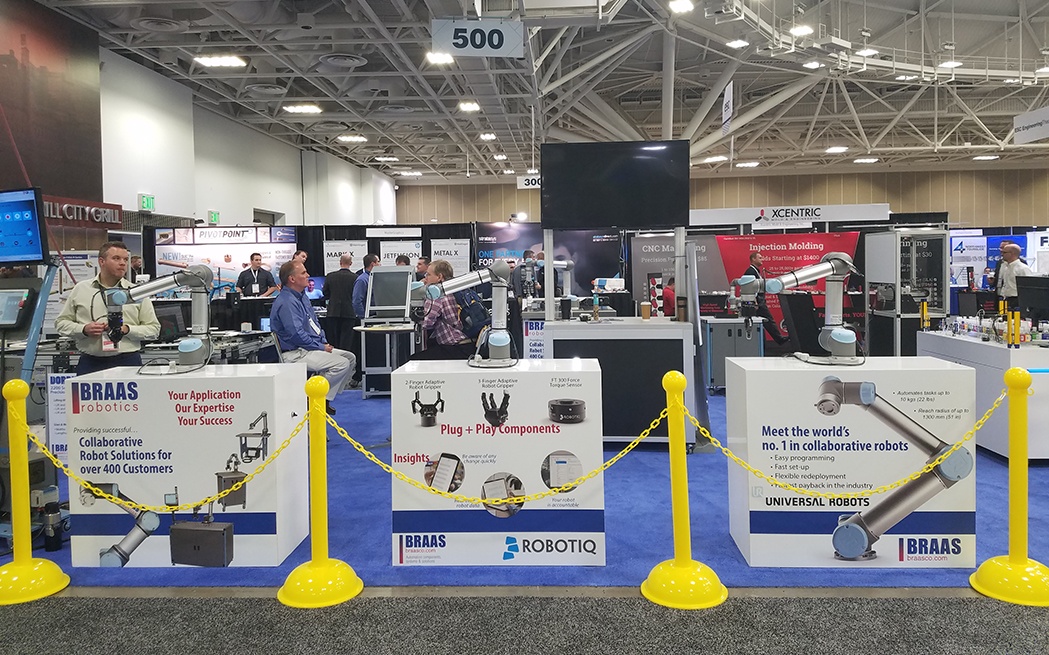HUI’s Product Development Manager, Mark Collins, sat in on a panel discussion at MD&M Minneapolis this month titled “The Future Role of Collaborative Robots in Smart Manufacturing.”
Here are some key points he took away from the discussion:
Collaborative Robots vs. Industrial Robots
To start, it’s important to understand what makes a collaborative robot unique from a typical industrial robot. Industrial robots have to be caged off and work in a separate space, so no one gets seriously injured by the machine’s speed and capable payload. Collaborative robots, or cobots, can work alongside people because they do not have the same strength as an industrial robot and they have a slower working pace—a speed similar to that of the average worker. These features make the cobot less intimidating, and a lot safer to work with as long as they are implemented within a set of safety parameters.
How will this Lead to More Efficient Manufacturing?
Think of collaborative robots as workers with the inability to see or hear, yet able to complete repetitive tasks with high efficiency. Plus, with how quickly the technology is evolving you’ll not only see a shift to robots that will also be able to see, but they’ll continue to get more cost effective over the years. Companies will start to see the paybacks from the investment within months instead of years, making it even easier to justify the expense.
You’ll Start Seeing Collaborative Robots Everywhere
Collaborative robots are already in the process of becoming commonplace technology, and not only in the manufacturing industry. San Jose along with other airports across the globe have added customer service robots to provide travelers with entertainment and information to help them navigate the airport terminal. They even offer multiple languages.
Collaborative Robots are Not Replacing the Human Worker
A lot of people are concerned about job security as soon as robots start replacing some of these manual tasks, which is a valid concern.
Consider what tasks the machines are replacing. People will be able to continue doing “creative work instead of the repetitive tasks.” These machines will take away the work that workers hate doing. Fabrication employees will be able to work collaboratively with the cobot by doing things like programing. Other jobs simply become more efficient, similar to a food service employee working with a commercial dishwasher. Ultimately, the machines help workers finish larger workloads with less grunt work. Here’s a video from Bloomberg Technology on Rethink Robotics, that explores the possibilities: https://www.youtube.com/watch?time_continue=27&v=T8Rs6CCBIZU
Mark has anticipated this transition to collaborative robots for a while now, and he’s excited to see how this will affect manufacturing and other industries as well. If you have more question for Mark on cobots, please contact us today.


